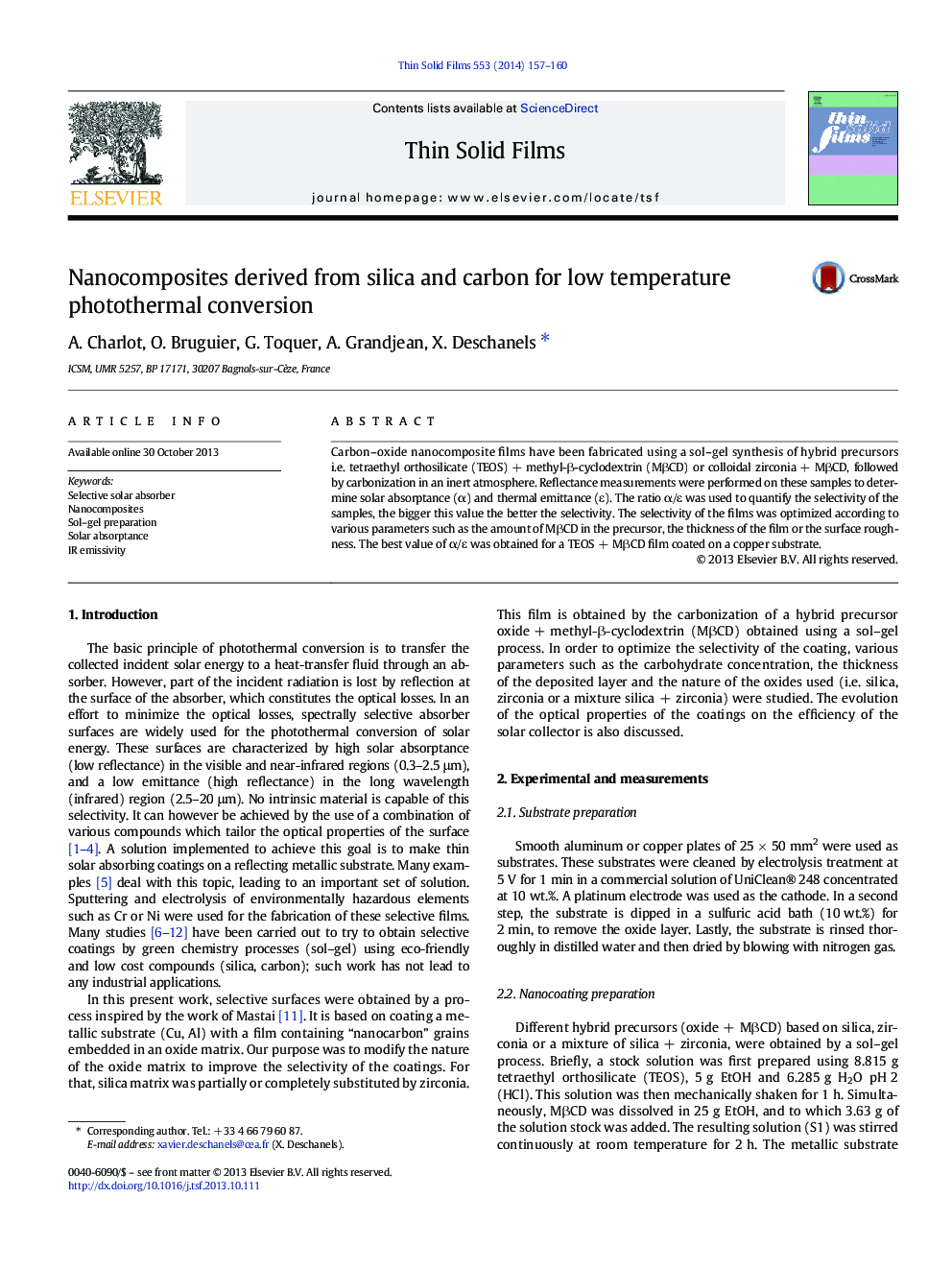| Article ID | Journal | Published Year | Pages | File Type |
|---|---|---|---|---|
| 1665531 | Thin Solid Films | 2014 | 4 Pages |
•Selective solar surfaces on metallic substrates were fabricated by a sol–gel process.•The coating consists of carbon nanoparticles embedded in a silica or zirconia matrix.•Solar absorptance of 0.67 and thermal emissivity of 0.021 were measured.•The content of carbon nanoparticles and the coating thickness are key parameters.
Carbon–oxide nanocomposite films have been fabricated using a sol–gel synthesis of hybrid precursors i.e. tetraethyl orthosilicate (TEOS) + methyl-β-cyclodextrin (MβCD) or colloidal zirconia + MβCD, followed by carbonization in an inert atmosphere. Reflectance measurements were performed on these samples to determine solar absorptance (α) and thermal emittance (ε). The ratio α/ε was used to quantify the selectivity of the samples, the bigger this value the better the selectivity. The selectivity of the films was optimized according to various parameters such as the amount of MβCD in the precursor, the thickness of the film or the surface roughness. The best value of α/ε was obtained for a TEOS + MβCD film coated on a copper substrate.
